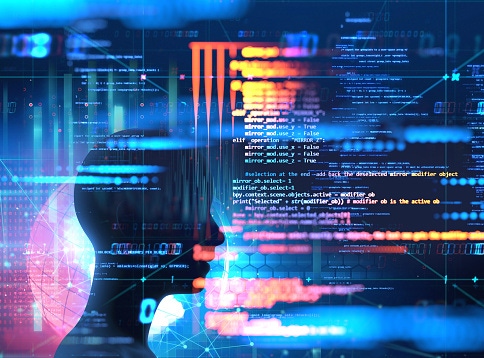Digital Twin Technology: Where Are We Now?
Data retrieval and analysis still key to mainstream use of digital twin technology.
May 8, 2019

Digital twin technology as it applies to IIoT is still in early stages, but the fiercely competitive nature of the industries most suited to reap its benefits continues to drive innovation, analysts said.
The high-stakes oil and gas, aerospace and defense, transportation and manufacturing sectors likewise can make the types of investments in digital modeling and analytics that are relatively inexpensive compared to the cost of developing a refinery or new jet engine.
“It’s imperative to know what’s going on, when something is going to break or is performing improperly,” said Ian Hughes, Senior Analyst, Internet of Things, for 451 Research. “Having more accuracy to then put it all together and do more interesting processes with the data, with machine learning and AI, to get a few extra percent improvement … it’s a no-brainer.”
The digital twin, which Gartner defines as “a digital representation of a real-world entity or system,” differs from a 3D model or a save-as version of a system architecture that you can sandbox. Conversely, a digital twin collects real- or near-time data from IoT sensors. And once it has that data, it analyzes the information to improve products and systems.
Whereas a 3D model captures an object’s geometry, a digital twin incorporates data from connected sensors and potentially physics engines as well. A digital twin can be used to demonstrate how discrete components in a system interact with one another.
As of the first quarter of 2019, according to Gartner research, 24% of organizations with IoT technologies in production or IoT projects in progress use digital twins. Another 42% plan to use digital twin technology within the next three years.
Their popularity, again according to Gartner, lies in the digital twin capabilities that “significantly decrease the complexity of IoT ecosystems while increasing efficiency.”
Beyond physical meters and dials by which manufacturing information is traditionally gleaned, the digital twin approach can “gather data from sensors, process the data using analytics, and use it for predictive maintenance and optimization,” said Scott Raynovich, principal analyst, Futuriom.
Among practical industry scenarios, the most common are wind turbines, energy rigs and aircraft engines. And as IoT technology proliferates, Raynovich said, the digital twin approach will become more common across industries to provide insight into existing operations and “things,” and envision new opportunities and model “new things.”
In principle — but in limited practice — digital twin technology can incorporate data from an array of systems, said Alexandra Rehak, practice leader, IoT, with Ovum Consulting.
“Digital twin is far from a mass market technology at this point,” she said. “It’s complex, not something off the shelf.” To be sure, Rehak added, the cost-benefit analysis of deploying a digital twin is an important consideration for enterprises.
Most early use cases are in automotive design and manufacturing, she said, where you have an intricate manufacturing process and a complex product that is constantly redesigned to include new features and technology.
For example, an automotive manufacturer could create a digital twin of an automobile prototype to test the design of the airbags or a steering system through simulations. The digital twin could enable them to virtually assess the impact of changes to the product or prototype, Rehak said.
Twins can also model an entire factory floor, with separate twins assigned to distinct operations such as mechanical systems, heating and cooling, and the movement of people. Microsoft announced late last year its Azure Digital Twins, potentially enabling customers to do just that.
Additionally, safety and the performance of the product over a long life cycle are critical elements. “There is also a lot of discussion about using digital twins for ongoing performance monitoring once a product has been sold and is out in the field or with a customer,” Rehak said.
Whether that type of tracking and monitoring is a “full” digital twin is debatable, she added. In Rehak’s parlance, it could be called an “information twin” with just connected product information. Simpler manufacturing environments might also use sensors on equipment and monitoring dashboards as more appropriate solutions than digital twins to drive efficiency.
A true digital twin isn’t always attainable because “the dots still haven’t been joined up” to bring that broader, interconnected view to life, Hughes said. Survey data he cited shows that companies’ efforts over the next two to five years are still focused on the first phase of digital transformation: retrieving data from machines and pulling it somewhere to be interpreted and put to use.
“They’re putting the plumbing in first, for the data, so it can be structured in a sensible way,” he said. “There isn’t a lot of infrastructure and middleware to help you do that, but there is the drive and the need to do it, a natural evolution.”
From that point, simulations can be run when rigorous environmental models can present “what-if” and “what-now” interpretations.
Last month, for example, Hughes reviewed a digital twin of an oil rig. “With the live digital model, engineers can rehearse for repairs, which valve needs to be turned off, if they need a ladder to reach something,” he said. “Previously they’d be working with plans and spreadsheets of readings, using a blueprint of pipes, take readings of dials. But this is taking live data and placing it into a 3D model. It’s a proper fusion between a CAD representation and what is going on in the real world.”
Similarly, Red Bull Racing trains its drivers in simulators, giant video games, Hughes said. Because not a lot of testing is allowed in Formula One, the simulator is rigged to a physical car or part of a car that isn’t actually being driven on a track.
It’s a twist on the twin model, Hughes said. “They’re using a simulator to exercise a physical device, seeing if a heavy foot on the accelerator will break the engine quicker. Trying to get the best yield from a manual process, and then instructing machinery to upgrade the brakes, adjust temperature or pressure.”
Once the technology is at a point where data and reliance on instrumentation are released from physical devices, a digital twin becomes a natural progression, Hughes said.
Consider the architect, Hughes said. They’ve always drawn their buildings first, then used 3D and simulations. “They don’t build in the field and wait for the building to fall over. They use a digital model to run the thing, to know where the bits and wires are. It’s an obvious step to make.”
Likewise, the oil refinery division of Honeywell Process Solutions has begun planning and possibly transitioning to digital builds using twins. “Building and commissioning the plant digitally so they can order parts, make changes to digital parts, reorder … all of that which can save years on the development of an oil refinery,” Hughes said.
“With digital, we’re not typing on paper and waiting to change errors. We adjust while we type,” he said. “That works for documents, building and oil refinery and a jet engine. It’s the same process.”
About the Author
You May Also Like








